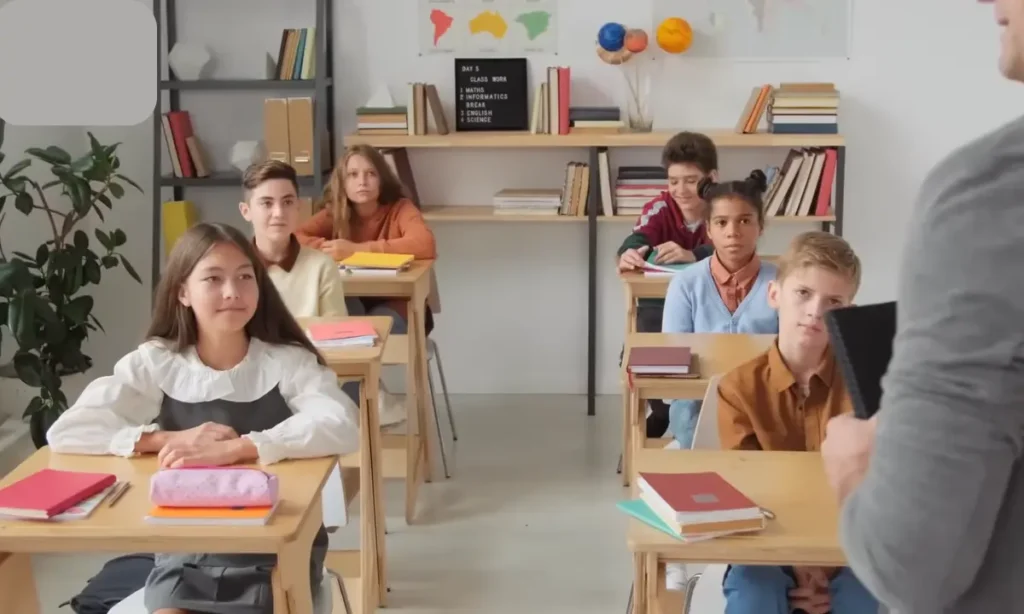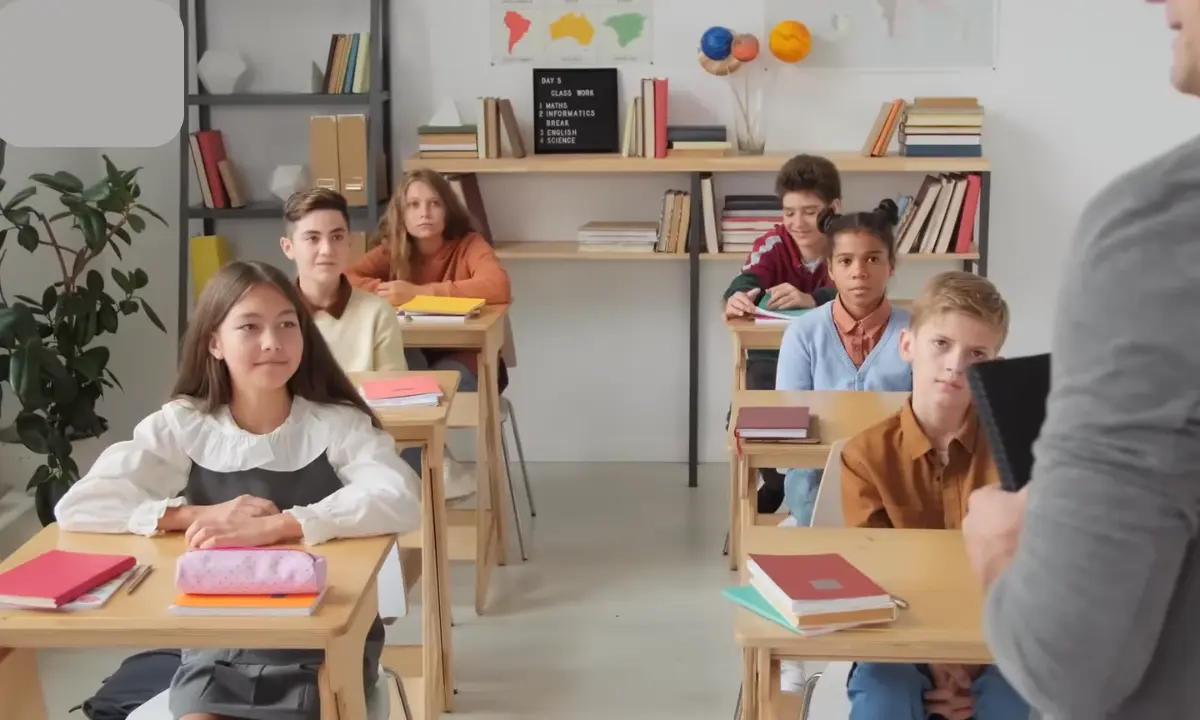Choosing the right primary school for your child is a big decision. It affects their learning, happiness, and growth. There are many things to think about when deciding which school is best for your child.
Below, we’ll discuss important factors such as the types of schools, academic quality, safety, and more, to help you make the right choice. If you’re looking for a comprehensive overview of primary education, check out our detailed guide on Primary Education in Pakistan.

What Are the Different Types of Primary Schools Available for My Child?
Before choosing a school, it’s important to understand the different types of primary schools available. Each type offers unique benefits, and the right fit depends on your child’s needs and your family’s preferences.
- Public Schools – These schools are funded by the government and are usually free of charge. They follow a standard curriculum and are available to everyone.
- Private Schools – These schools are run by private organizations and charge tuition fees. They may offer specialized programs and smaller class sizes.
- Charter Schools – Charter schools are independently run but publicly funded. They often have a specific focus, such as arts or science, and have more flexibility in their teaching methods.
- Montessori Schools – These schools focus on hands-on, self-paced learning and development. They emphasize independence and respect for a child’s natural development. For those considering Montessori education, explore the Best Montessori Schools in Lahore for top recommendations in your area.
- International Schools – These schools follow an international curriculum, such as the International Baccalaureate (IB), and are ideal for families who move frequently or value global education.
Academic Quality
A school’s academic quality is one of the most important factors in choosing a school. It determines how well the school will prepare your child for future learning.
How Can I Evaluate the Curriculum Quality of a Primary School?
To evaluate the curriculum, you should look at what subjects are taught and how they are taught. A good primary school should offer a balanced curriculum that includes subjects like math, science, language arts, and social studies.
Additionally, the school should include activities that encourage critical thinking, creativity, and problem-solving.
How Do Schools Measure Student Learning Outcomes?
Schools usually measure learning outcomes through tests, quizzes, and assignments. Ask the school how they track student progress and how they support students who may need extra help. Some schools also use standardized tests to compare students’ performance to others in the same grade level.
How Does the School Integrate Technology Into the Learning Process?
In today’s world, technology plays a big role in education. Schools should integrate technology to help students learn better and develop important digital skills. Ask if the school uses smart boards, tablets, or online learning tools, and how often technology is used in the classroom.
School Infrastructure & Safety
The environment where your child will spend most of their day should be safe, welcoming, and equipped with the right tools for learning.
What Type of Infrastructure Should a Good Primary School Have?
A good primary school should have clean and well-maintained classrooms, playgrounds, libraries, and computer labs. The school should also have modern equipment that supports learning, like projectors, whiteboards, and science labs.
What Safety Measures Does the School Have to Protect My Child?
Safety is crucial. Schools should have security measures in place, like locked doors, visitor check-in systems, and security guards. It’s also important that the school has an emergency plan for situations like fires, earthquakes, or other risks. Ask about their procedures for keeping children safe during school hours and after-school activities.
Classroom Environment
The classroom is where your child will spend most of their time, so it’s important to understand how the classroom environment can impact their learning experience.
How Does Class Size Impact My Child’s Learning Experience?
Smaller class sizes are often better because they allow teachers to give more attention to each student. In a smaller class, your child will have more opportunities to ask questions and participate in discussions.
What Is the Ideal Student-Teacher Ratio for Effective Education?
The ideal student-teacher ratio varies, but generally, a ratio of 15 to 1 is considered good for primary schools. This allows the teacher to focus on each child’s needs and offer more personalized instruction.
What Qualifications Should I Look for in a Primary School Teacher?
Teachers should have proper certification and experience in teaching young children. A good primary school teacher should also be patient, caring, and skilled in creating a positive learning environment. Don’t hesitate to ask the school about the qualifications of their teaching staff.
How Do Schools Ensure Active Student Engagement in the Classroom?
Active student engagement is key to learning. Schools can encourage engagement by using interactive lessons, group work, and hands-on activities. Ask the school how they make sure every student is involved and participating in the classroom.
What Teaching Methods Are Used, and How Do They Benefit My Child?
There are various teaching methods, such as traditional lectures, project-based learning, or Montessori methods. Each method has its benefits.
For example, project-based learning allows students to work on real-world problems, while Montessori methods encourage independence. Ask the school what teaching methods they use and how they benefit your child’s overall learning.
Communication & Relationships
Strong communication between parents, teachers, and the school is essential for your child’s success.
How Often Do Teachers Communicate with Parents, and How Is This Communication Structured?
Good schools communicate regularly with parents through meetings, progress reports, and emails. Ask how often you will receive updates on your child’s progress and whether the school offers parent-teacher conferences or other opportunities to discuss your child’s development.
How Can I Assess a School’s Reputation and Past Performance?
You can assess a school’s reputation by talking to other parents, reading online reviews, and asking the school for their performance data. Look for a school that has a strong history of academic success and positive feedback from parents and students.
Extracurricular & Developmental Opportunities
Extracurricular activities help children develop important life skills and discover new interests outside the classroom.
What Extracurricular Activities Are Available to Help My Child’s Overall Development?
A well-rounded education includes opportunities for physical, social, and emotional growth. Look for schools that offer extracurricular activities such as sports, music, art, and clubs. These activities can help your child develop teamwork, leadership, and communication skills.
How Important Is Parental Involvement in the School, and What Opportunities Are Provided for Parents to Participate?
Parental involvement is important for a child’s success. Schools often have opportunities for parents to volunteer, attend school events, or join parent-teacher associations (PTAs). Ask the school how they involve parents and what roles parents can play in their child’s education.
Conclusion:
choosing the right primary school for your child involves considering many factors, including the school’s academic quality, infrastructure, safety, classroom environment, and extracurricular opportunities. By asking the right questions and gathering as much information as possible, you can make an informed decision that will set your child on the path to success.

